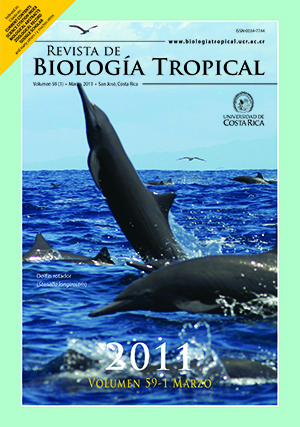Abstract
Diodon holocanthus is an important economic and ecological species of the demersal fish community, caught as bycatch from local shrimp fishery. The reproductive biology of this long-spine porcupinefish has not yet been described, and reproductive season, the sex ratio, length distribution, length at first gonad maturity, and the gonad macro and microscopic features are described. A total of 400 organisms, ranging from 5.0 to 40.3cm (average 18.4cm) total length, were caught from the continental shelf of the Central Mexican Pacific, from December 1995 and December 1998. Sex ratio was 1:0.86 females to males (n=253). The length at which 50% of the individuals showed maturing gonads was 19.7cm for females and 20.1cm for males. Length of the smallest organism with ripe gonads was 12.2cm for females and 13cm for males. Four gonadal maturation stages were found in both sexes, and five oocyte development phases were identified. The oocyte development pattern is of asynchronous type, which means the species can reproduce several times a year. Testicle development is lobular type, as in most teleost fishes. Monthly mean values of the gonad-somatic index suggest the reproduction activity peaks in June, and September-December.
Comments

This work is licensed under a Creative Commons Attribution 4.0 International License.
Copyright (c) 2011 Revista de Biología Tropical






